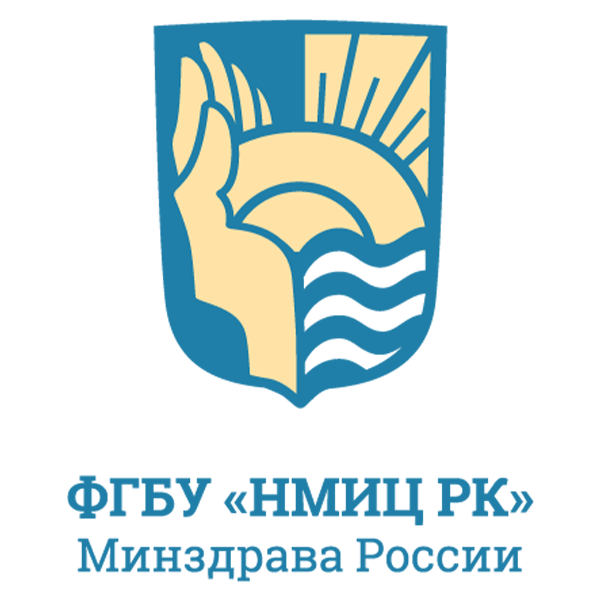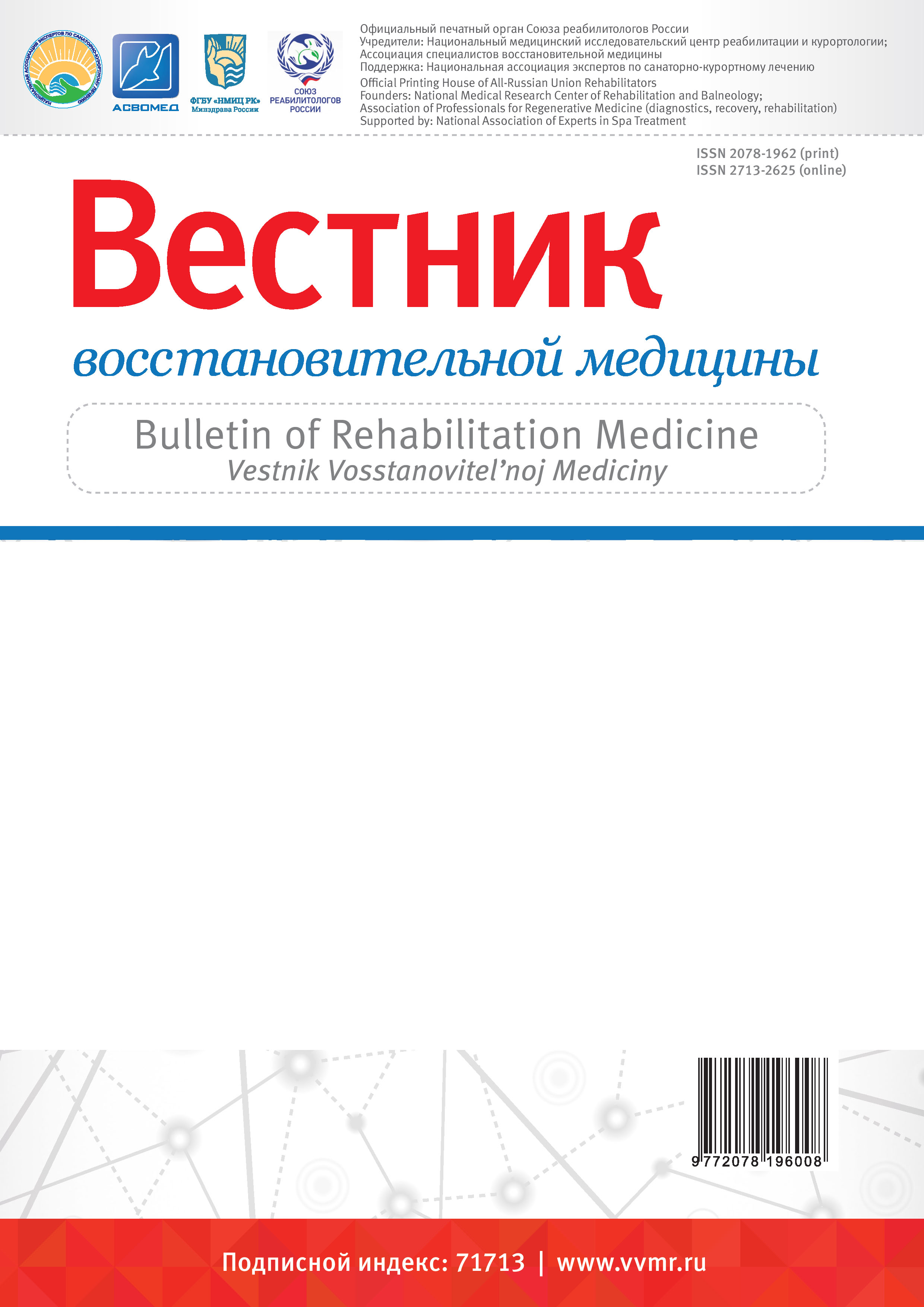Российский национальный исследовательский медицинский университет им. Н.И. Пирогова Минздрава России, Москва, Россия
Российский национальный исследовательский медицинский университет им. Н.И. Пирогова Минздрава России, Москва, Россия
INTRODUCTION. The relevance of the medical rehabilitation of children with scoliosis is due to the high prevalence of the disease in the structure of pediatric orthopedic pathology (up to 27.6%), the severe, progressive course of the disease during puberty (50.0%), and the high risk of early disability. The complex application of high-intensity pulsed magnetic therapy and therapeutic corrective gymnastics is one of the promising methods of medical rehabilitation of scoliosis in children. AIM. To establish scientifically the use of high-intensity pulsed magnetic therapy in the medical rehabilitation of children with grade II scoliosis. MATERIAL AND METHODS. The study involved 90 children aged 5-18 years, suffering from scoliosis of the II degree, divided into three equal groups: the study group – received a complex effect of high-intensity pulsed magnetic therapy and corrective gymnastics; 1st comparison group – high-intensity pulsed magnetic therapy; 2 comparison group – corrective gymnastics. All children underwent a dynamic clinical and functional examination. RESULTS AND DISCUSSION. In the majority (89%) of children who received physical factors, an improvement in orthopedic status was noted, more significant (p<0.05) – in the group that received their complex effect. Their positive impact on the indicators of functional endurance of the muscles of the back and abdomen, more significant with a combination of two physical factors, was revealed. The combined use of high-intensity pulsed magnetic therapy and corrective gymnastics contributed to a more pronounced improvement in the parameters of the cardio-respiratory system. According to laser Doppler flowmetry, a favorable dynamics of microcirculation parameters was revealed, significantly more significant with the separate influence of high-intensity pulsed magnetic therapy and the complex influence of physical factors (p<0.05). CONCLUSION. Based on a comprehensive assessment of the dynamics of clinical and functional parameters in children with scoliosis of the II degree, a statistically significant therapeutic efficacy of the combined use of high-intensity pulsed magnetic therapy and corrective gymnastics (83.3%) was proved, which is significantly higher than with the separate use of high-intensity pulsed magnetic therapy (66.7%) and corrective gymnastics – at 56.7%.
scoliosis, children, high-intensity pulsed magnetic therapy, therapeutic corrective gymnastics, orthopedic status, laser Doppler flowmetry
1. Klinicheskie rekomendacii. Travmatologiya i ortopediya detskogo i podrostkovogo vozrasta. Moskva «GEOTAR-Media». 2019: 15-23.
2. Negrini S., Donzelli S., Aulisa A.G. et al. 2016 SOSORT guidelines: orthopaedic and rehabilitation treatment of idiopathic scoliosis during growth. Scoliosis and Spinal Disorders. 2018; (13). https://doi.org/10.1186/s13013-017-0145-8
3. Novak I., Morgan C., Fahey M. et al. State of the Evidence Traffic Lights 2019: Systematic Review of Interventions for Preventing and Treating Children with Cerebral Palsy. Current Neurology and Neuroscience Reports. 2020; 20(2). https://doi.org/10.1007/s11910-020-1022-z
4. Nouri M., Wada K., Kumagai G. et all. The incidence and prevalence of early-onset scoliosis: a regional multicenter epidemiological study. Spine Jour- nal. 2022; 9(22): 1540-1550. https://doi.org/10.1016/j.spinee.2022.03.016
5. Visser Yan Dous. Detskaya ortopediya. Simptomy, differencial'naya diagnostika, dopolnitel'noe obsledovanie i lechenie. SpecLit. 2022: 40-59.
6. Epifanov V.A., Epifanov A.V. Reabilitaciya v travmatologii i ortopedii: rukovodstvo. Moskva. «GEOTAR-Media». 2021: 522-542.
7. De la Garza Ramos R., Nakhla J., Echt M. et al. A National Analysis on Predictors of Discharge to Rehabilitation After Corrective Surgery for Adolescent Idiopathic Scoliosis. Spine. 2019; 44(2): 118-122. https://doi.org/10.1097/BRS.0000000000002758
8. Ahdoot E.S., Fan J., Aminian A. Rapid Recovery Pathway for Postoperative Treatment of Adolescent Idiopathic Scoliosis. Journal of the American Academy of Orthopaedic Surgeons Global Research and Reviews. 2021; 5(3): e20.00220. https://doi.org/10.5435/JAAOSGlobal-D-20-00220
9. Shin H.I., Shin H.I. Application of Fabric-Type Spinal Orthosis for Flexible Neuromuscular Scoliosis: A Preliminary Study. American Journal of Physical Medicine and Rehabilitation. 2020; 99(10): 887-894. https://doi.org/10.1097/PHM.0000000000001431
10. Cykunov M.B. Medicinskaya reabilitaciya pri skolioticheskih deformaciyah. Vestnik vosstanovitel'noy mediciny. 2018; (4): 75-91
11. Hedayati Z., Ahmadi A., Kamyab M. et al. Effect of Group Exercising and Adjusting the Brace at Shorter Intervals on Cobb Angle and Quality of Life of Patients with Idiopathic Scoliosis. American Journal of Physical Medicine and Rehabilitation. 2018; 97(2): 104-109. https://doi.org/10.1097/PHM.0000000000000812
12. Babaee T., Kamyab M., Ganjavian M.S. et al. Success Rate of Brace Treatment for Juvenile-Onset Idiopathic Scoliosis up to Skeletal Maturity. The Inter- national Journal of Spine Surgery. 2020; 14(5): 824-831. https://doi.org/10.14444/7117
13. Jang J., Park Y., Lee S. et al. The effect of a flexible thoracolumbar brace on neuromuscular scoliosis: A prospective observational study. Medicine. 2021; 100(32): e26822. https://doi.org/10.1097/MD.0000000000026822
14. Grivas T.B., Negrini S., Aubin C.E. et al. Nonoperative management of adolescent idiopathic scoliosis (AIS) using braces. Prosthetics and Orthotics International. 2022; 4(46): 383-391. https://doi.org/10.1097/PXR.0000000000000117
15. Levkov V.Yu., Polyaev B.A., Panyukov M.V. Osoznannaya korrekciya skolioza i narusheniy osanki. Nauchno-prakticheskoe rukovodstvo. Moskva. 2020: 144s.
16. Zapata K.A., Sucato D.J., Jo Chan-Hee. Physical Therapy Scoliosis-Specific Exercises May Reduce Curve Progression in Mild Adolescent Idiopathic Scoliosis Curves. Pediatric Physical Therapy. 2019; 31(3): 280-285. https://doi.org/10.1097/PEP.0000000000000621
17. Lau R., Cheuk K.Y., Tam E. et al. Feasibility and effects of 6-month home-based digitally supported E-Fit program utilizing high-intensity interval exercises in girls with adolescent idiopathic scoliosis: a randomized controlled pilot study. Studies in Health Technology and Informatics. 2021; (280): 195-198. https://doi.org/10.3233/SHTI210466
18. Ko E.J., Sung I.Y., Yun G.J. et al. Effects of lateral electrical surface stimulation on scoliosis in children with severe cerebral palsy: a pilot study. Disabil- ity and Rehabilitation. 2018; 40(2): 192-198. https://doi.org/10.1080/09638288.2016.1250120
19. Razumov A.N., Pogonchenkova I.V., Han M.A., Lyan N.A., Vahova E.L., Mikitchenko N.A. Primenenie impul'snogo nizkochastotnogo elektrostaticheskogo polya v pediatrii. Voprosy kurortologii, fizioterapii i lechebnoy fizicheskoy kul'tury. 2019; 96(1): 55-62. https://doi.org/10.17116/kurort20199601155
20. Kulikov A.G., Voronina D.D. Sovremennye aspekty primeneniya magnitnoy stimulyacii v klinicheskoy praktike. Fizioterapiya, bal'neologiya i reabilitaciya. 2016; 15(3): 155-159.






